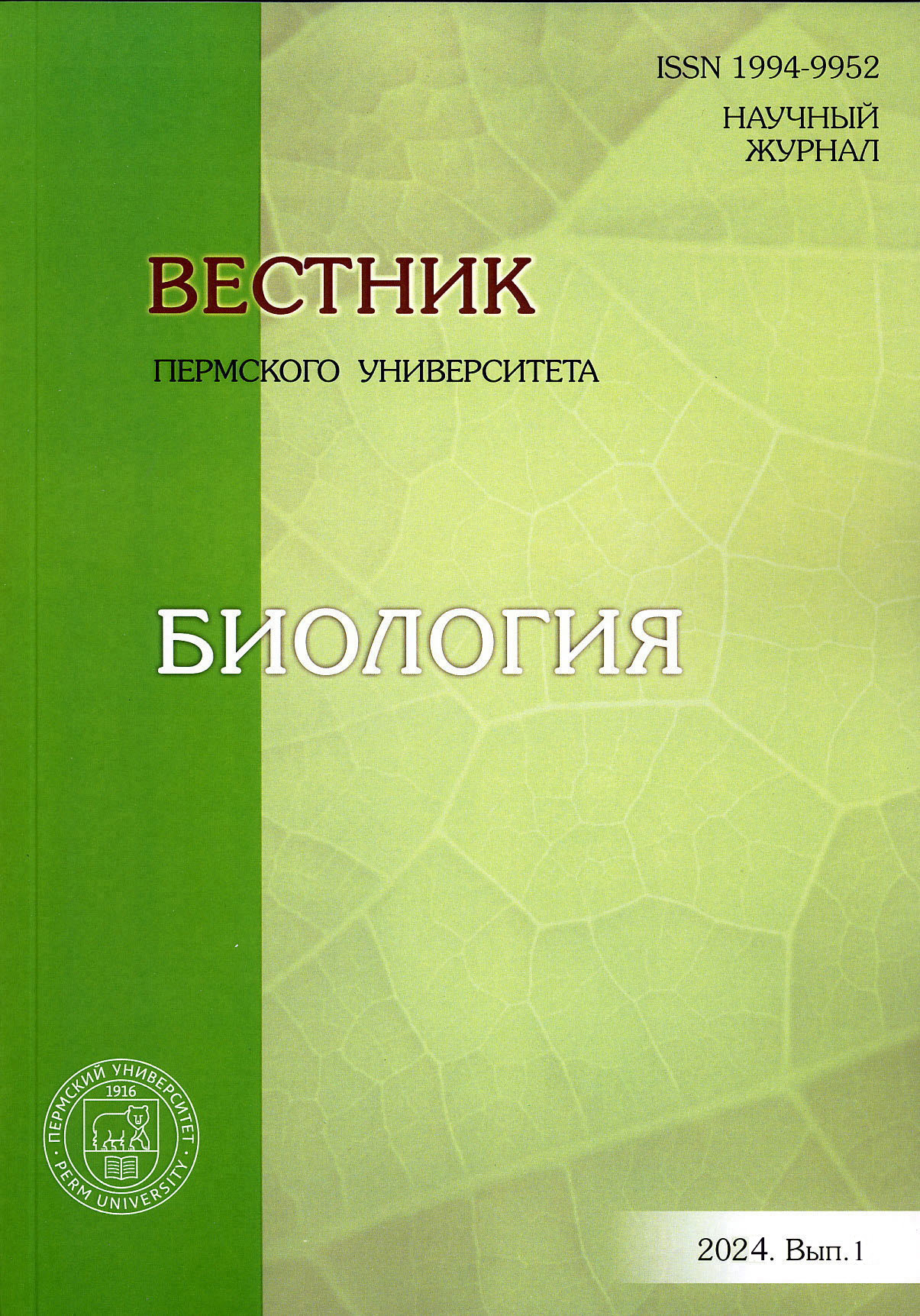The use of bacteria with overexpression of the cadA gene for the bioconversion of lysine into cadaverine
Main Article Content
Abstract
Article Details
References
Akhova A.V., Tkachenko A.G. Cadaverine biosynthesis in Escherichia сoli adaptation to hydrogen per-oxide // Applied Biochemistry and Microbiology. 2022. Vol. 58, № 5. Р. 582–589. DOI: 10.1134/S0003683822050039.
Huang Y. et al. Green chemical and biological synthesis of cadaverine: recent development and challeng-es // RSC Advances. 2021. Vol. 11, № 39. P. 23922–23942. DOI: 10.1039/d1ra02764f.
Kanjee U., Houry W.A. Mechanisms of acid resistance in Escherichia coli // Annual Review of Microbiol-ogy. 2013. Vol. 67. P. 65–81. DOI: 10.1146/annurev-micro-092412-155708.
Kim H.J. et al. Optimization of direct lysine decarboxylase biotransformation for cadaverine production with whole-cell biocatalysts at high lysine concentration // Journal of Microbiology and Biotechnology. 2015. Vol. 25, № 7. P. 1108–1113. DOI: 10.4014/jmb.1412.12052.
Kim H.T. et al. High-level conversion of l-lysine into cadaverine by Escherichia coli whole cell biocatalyst expressing Hafnia alvei l-lysine decarboxylase // Polymers (Basel). 2019. Vol. 11, № 7. P. 1184. DOI: 10.4014/jmb.1602.02030.
Kim J.H. et al. Functional study of lysine decarboxylases from Klebsiella pneumoniae in Escherichia coli and application of whole cell bioconversion for cadaverine production // Journal of Microbiology and Biotech-nology. 2016. Vol. 26, № 9. P. 1586–1592. DOI: 10.3390/polym11071184.
Kind S. et al. From zero to hero - production of bio-based nylon from renewable resources using engi-neered Corynebacterium glutamicum // Metabolic Engineering. 2014. Vol. 25. P. 113–123. DOI: 10.1016/j.ymben.2014.05.007.
Ma W. et al. Enhanced cadaverine production from L-lysine using recombinant Escherichia coli co-overexpressing CadA and CadB // Biotechnology Letters. 2015. Vol. 37, № 4. P. 799–806. DOI: 10.1007/s10529-014-1753-5.
Ma W. et al. Advances in cadaverine bacterial production and its applications // Engineering. 2017. Vol. 3, № 3. P. 308–317. DOI: 10.1016/J.ENG.2017.03.012.
Maniatis T., Fritsch E.F., Sambrook J.K. Molecular cloning: a laboratory manual. Cold Spring Harbor Laboratory, Cold Spring Harbor, 1982. 545 p.
Meng S.Y., Bennett G.N. Nucleotide sequence of the Escherichia coli cad operon: a system for neutrali-zation of low extracellular pH // Journal of Bacteriology. 1992. Vol. 174, № 8. P. 2659–2669. DOI: 10.1128/jb.174.8.2659-2669.1992.
Nærdal I. et al. L-lysine production by Bacillus methanolicus: genome-based mutational analysis and l-lysine secretion engineering // Journal of Biotechnology. 2017. Vol. 244, P. 25–33. DOI: 10.1016/j.jbiotec.2017.02.001.
Nishi et al., 2006. US7189543B2 patent.
Oh Y.H. et al. Development of engineered Escherichia coli whole-cell biocatalysts for high-level conver-sion of L-lysine into cadaverine // Journal of Microbiology and Biotechnology. 2015. Vol. 42, № 11. P. 1481–1491. DOI: 10.1007/s10295-015-1678-6.
Qian Z.G., Xia X.X., Lee S.Y. Metabolic engineering of Escherichia coli for the production of cadaver-ine: a five carbon diamine // Biotechnology and Bioengineering. 2011. Vol. 108, № 1. P. 93–103. DOI: 10.1002/bit.22918.
Shin J. et al. Characterization of a whole-cell biotransformation using a constitutive lysine decarboxylase from Escherichia coli for the high-level production of cadaverine from industrial grade l-lysine // Applied Bio-chemistry and Biotechnology. 2018. Vol. 185, № 4. P. 909–924. DOI: 10.1007/s12010-018-2696-4.
Ting W.W. et al. Whole-cell biocatalyst for cadaverine production using stable, constitutive and high ex-pression of lysine decarboxylase in recombinant Escherichia coli W3110 // Enzyme and Microbial Technology. 2021. Vol. 148. P. 109811. DOI: 10.1016/j.enzmictec.2021.109811.




